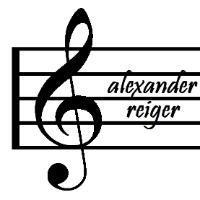Leaderboard
Popular Content
Showing content with the highest reputation on 11/13/2020 in all areas
-
one thing I would suggest, if you could somehow work an Indian model into these I think it would really help bring unity to your themes2 points
-
Hello everybody, I am posting a waltz, which I wrote earlier. I actually had some (moderate) success with this piece. I polished it somewhat, and I include the score as well. I think that it might be suitable as a nice exercise for the intermediate-level pianist. I would be grateful to learn what you think of it (including your critical viewpoints).1 point
-
Here's something I composed about 2 years ago (and I think was my first post to this forum!). I recently went through and updated the score and audio, thought I'd put them here for others to (perhaps) enjoy. This was my attempt at a pastiche Romantic viola concerto. Violists don't have much in the repertoire, and I was looking to expand it. It hearkens back to my tonal days, and proves that I don't just compose modal music! There are three movements, like a traditional concerto: moderately fast, slow, fast. All told, the work is around 35 minutes long, so feel free to listen to it by movement. I'd love to hear your suggestions and feedback. Happy listening!1 point
-
1 point
-
The reason I mentioned it is because I've seen another composers thread turn into just such a debate! LoL You're welcome! I enjoyed listening and commenting.1 point
-
Yes, it should have been more of a portamento, but I see that the slur stops just before the note. I had originally written the entire phrase to be slurred—unfeasible due to bowing constraints, of course—and changed the score to be more playable. Unfortunately, the audio remains like the original score. Great ear! Yes, the Sibelius was definitely on my mind when writing this. I didn't try to borrow his style, it just happens to be my style, too. 😉 I'm glad you enjoyed the themes. And I'm sorry the section at 11:09 didn't go on long enough! The cadenza hasn't been "playtested," so there's no telling what will be changed should this ever become a live performance. Why, thank you! I tend to be very inclusivist even in my personal life, so I guess it's no surprise I wouldn't want any instrument left out, either! I sometimes am afraid that if I swell a melody too much, it will sweep me off my feet and on to a place in the music I hadn't foretold, so I tend to be more conservative in that regard. I'm also a minimalist in style and dislike loud and long dramatic outbursts; perhaps that has something to do with it, too. I'm sorry the score wouldn't open! Sometimes I have to click and close out of a PDF link on this forum several times before I can view it. I originally just named this movement "Finale," but felt that it needed to be more of a tempo marking in order to comply with the other two movements' titles. You're right, though, it doesn't stay "vivacissimo" the whole time. Ah, the sweet melodies. This is the first (and only) time the work rests in D major, which was done on purpose as a sort of "conflict resolution" device. Since this is the final movement for an instrument that has so few concerti devoted to it, I wanted to make sure it was worth the while! The concerto needed to end in its relative major key (of course!), and what better way to effect that than with stirring melodies in the closing movement? I, too, love the buildup to the cadenza at 6:25. Its dissonance speaks of unrest and uncertainty, and the viola answers with a difficult solo passage leading up to the grand finale. Thank you for your kind remarks! In regards to "pastiche," I suppose I use the term somewhat relatively. Romanticism isn't my normal style, and to compose this way meant putting myself in the mindset of Romantic composers whose works I enjoy and have listened to extensively. These were chiefly Sibelius, Dvorak and Grieg. I did not look at any of the scores from their great concerti; I merely "felt" their works when composing the various passages and themes that comprise my work. In essence, yes, I think my originality was hindered—although I greatly enjoy what I've written here. Since I was writing "against my grain," so to speak, and trying to emulate a former style, I called this work "pastiche," perhaps incorrectly. Were this someone's natural style and were their intent other than to copy the style of a certain period, I don't know that it could still be called pastiche. Certainly, I don't think tonal harmony is pastiche, nor do I think anyone that employs it is writing pastiche. (I do see how that is implied in my post—my apologies.) To summarize, I don't think pastiche should carry negative connotations. A composer should write what he likes (unless he's trying to make money, at which point he's writing for an audience) and if it sounds like it belongs in another time period, so be it. You're right, though, I don't want this thread to turn into a debate about what is or isn't pastiche. Thanks a million for taking the time to review this work... it means a lot to me!1 point
-
1st movement - You have glissandi in the strings in the introduction which I didn't see in the score? The introduction is very effective and foreboding! This is probably my favorite movement of the three. Your style throughout this concerto reminds me of Sibelius in many places. I like the lone tutti orchestra hit you employ as a kind of punctuation mark. Your secondary theme is quite beautiful! Nice choice giving it to French Horn with the viola soloing over it. The solo viola sections remind me of a Sibelius concerto for a string instrument as well. I love the section starting around 11:09 - it is quite intriguing! I wish that section had gone on longer. Great viola cadenza! Just from listening to it, it sounds challenging in it's polyphony and use of triple/quadruple stops. Is there a particular piece you felt was your biggest influence in writing this piece? I felt like the ending to this movement kind of snuck up on me unexpectedly. Great job overall! 2nd movement - What I notice in this movement that I didn't mention in the previous movements' comments is that you are very good at writing great solo lines for various instruments throughout the orchestra. You have great long leading melodic lines in this - I just felt like they ended their phrases quite underwhelmingly and unobtrusively where I would maybe have expected them to intensify even more as the phrase progressed. For some odd reason I couldn't open the score pdf for this movement. I like how you use glockenspiel at just the very end of both this and the previous movement. 3rd movement - I like the tarantella-like feel to this movement! I was surprised by the many places that didn't conform with this movements marking of "Vivacissimo". I expected a much more consistently intense and driving piece from that. There are some surprising sweet melodies in this with a nice touch of glockenspiel to ornament the viola. I like the dramatic way you announce the return of the tarantella-like section with a timpani roll - this certainly has it's own unique structure. I love the dissonant chords you employ so well to create drama at around 6:25. In this movement I felt like the finale had a nice build-up to it and led naturally to the end which was great. Overall this was a great concerto! I really enjoyed the interplay between the solo viola and the orchestra and it's many solo instruments and soli sections as well! I felt like almost every instrument of the orchestra got a chance at a solo as well so that's a plus. I know you study lot's of scores so I wondered throughout listening to this whether your intimate knowledge of other composer's works in any way hindered your originality here since you also mentioned that this is supposed to be a pastiche. I write tonal pieces as well and I am not consciously making a pastiche when I write them although maybe that's a discussion for a different [and most probably controversial] forum topic. Nice job!1 point
-
1 point
-
Yay, I'm glad to know at least someone likes that last chord besides me :D I sometimes like it when the violin stops abruptly. Thank you for the suggestion, though, I'll try to add more gradual transitions next time as well! The rewriting part isn't hard. I just feel like simple melodies like that will always remind someone of some other melody, and it will be an endless cycle of rewriting 🥺 Maybe I'm overthinking. I could change the motif like that, for example:1 point
-
1 point
-
This piece sounds really nice! I must say, though, that the main theme sounds almost identical to the theme from 'Princess Mononoke' by Joe Hisaishi (video below). Maybe you could consider modifying it slightly so it doesn't sound quite so similar? My other comment is that the violin part seems to stop and start quite abruptly several times throughout the piece – perhaps you could consider extending the half notes so there's more of a smooth transition. Apart from that, great work! I liked the abrupt key change and the way you didn't end on a tonic chord – both very bold and refreshing choices!1 point




.thumb.png.8b5b433a341551e913a34392660bc95b.png)